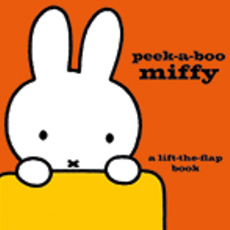
While babies enjoy peek-a-boo games, toddlers are often ready for more of a surprise. This is why Jack in the Box-type toys have been popular for generations. Not only are they a great way of entertaining young children, they also have many developmental benefits too.
WHEN AND HOW
Ideally, you should begin by playing a few peek-a-boo games with a toddler. This way, the child will learn about things disappearing and then appearing. Once the child is comfortable with this concept, look out for a Jack in the Box that you think will be appealing.
- Choose a time when the toddler is not tired as this can make a difference to their reaction.
- Encourage the child to handle and explore the resource.
- Slowly start to make the Jack in the Box work.
- Maintain eye contact with the child at all times.
- When the Jack pops up, look surprised but also happy.
- Repeat again, but this time when the Jack pops up, repeat a phrase such as ‘Here he comes!’
- Follow the child’s lead and either repeat again or let the child explore and handle the toy.
DEVELOPMENTAL BENEFITS
Jack in the Box-type games are a great stimulus for talk, but also for children to enjoy learning about how things work. This kind of play:
- encourages vocalisations as toddlers react to the Jack in the Box coming out (language)
- helps build vocabulary as children associate words with actions (language)
- encourages toddlers’ co-ordination as they try to make the Jack in the Box work (physical)
- gives toddlers opportunities to share a special moment with their key person (social)
- helps children explore new objects and how they work (cognitive).
NEXT STEPS
Once you have introduced a Jack in the Box to a child, you can encourage them to make it work for themselves. You could then consider introducing a range of other wind-up toys so that children learn about cause and effect. If children seem interested in boxes and finding surprises, you might like to plan activities that involve boxes. This might include putting out three cardboard boxes and hiding a teddy in one of them.
WHAT TO OBSERVE
There are several aspects of development that are worth observing when using a Jack in the Box:
- Cognitive skills Consider how quickly the child works out what is going to happen as you turn the handle on the Jack in the Box. Does the child remain surprised after several turns?
- Communication and language Look out for signs that the child is starting to associate action with words or attempts to vocalise the phrase that you have been using when the Jack pops out.
- Co-ordination See how easily the toddler manages to work out and use the Jack in the Box. If there is a handle, are they able to turn it?
HOME LEARNING
While not all parents will have an actual Jack in the Box at home, some will have pop-up toys. You can also show parents how to create a ‘pop-up’ game by hiding a cuddly toy in a piece of fabric and then revealing it. Parents can also play games with their child when together they look for things that have been hidden – for example, hide a teddy and then together look for it. It is worth talking to parents about how games that involve hiding help children learn about shapes and measures as well as create opportunities for talk.
RHYME TIME
There are many wonderful action rhymes that have a surprise element to them. You might like to try out this classic one that links well to the Jack in the Box theme:
Jack in the box
Sits so still.
Won’t you come out?
Yes, I will! Pop!
To see and hear the song being acted out, visit: www.mamalisa.com/?t=es&p=3677
BOOK TIME 
Look out for simple lift-the-flap books, as these are great for helping toddlers learn about hiding and also surprises. A lovely lift-the-flap book is Peek-a-Boo Miffy, which is likely to appeal to adults and toddlers alike.









